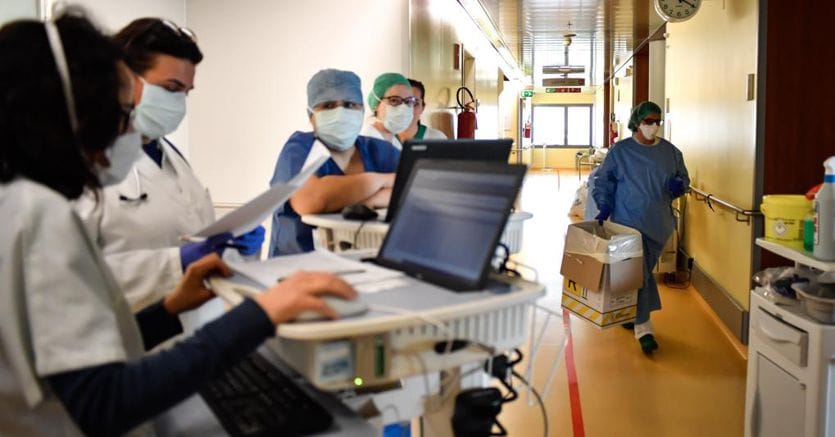Listen to the audio version of the article
Italians in the South are once again packing their bags to seek treatment in the North as they did before the Covid tsunami which, in the hardest years of the pandemic, caused even what were once called “journeys of hope” to decline. The hospitals most sought after by patients arriving especially from Campania, Calabria and Sicily are those in Lombardy, Emilia Romagna and Veneto where they are looking above all for structures for highly complex hospitalizations – cancer among all – mainly choosing accredited private structures rather than public ones.
Migration of patients at pre-pandemic levels
The updated numbers of the phenomenon of “health mobility” are put together by Agenas, the Agency for regional health services, which in its new report on this phenomenon underlines how together with the patients – who have the right to be treated wherever they want – a flow of money is moving which only for hospitalizations in 2022 reached 2.7 billion after which in 2020 – in the midst of the pandemic – had fallen to around 2 billion and thus returning to pre-Covid levels when this value was around 2.8 billion a year. A flow that translates into receipts for the Northern Regions and disbursements for those of the South: on hospitalizations in 2022, Emilia and Lombardy, for example, record a positive balance between active and passive mobility (incoming and outgoing patients) of 337 million respectively – greatly increased compared to pre-Covid – and 362 million (down); on the other hand, Campania is paying 204 million for the hospitalizations of its citizens outside the Region (a figure which is however improving), while Calabria has a negative balance of 136 million.
Lombardy, Emilia and Veneto collect and the South pays
The search for visits and tests outside the Region is growing even more than before the pandemic levels: the economic flow for outpatient specialists in the first half of 2023 reached 330 million euros when in the first half of 2019 it was 316 million. Here the most attractive regions are Lombardy, Veneto, Tuscany, while the escape regions are always Campania, Calabria and Sicily. In general, for all healthcare mobility (hospitalizations, visits, diagnostics, etc.) Lombardy, Emilia and Veneto together collect around 1.2 billion while Calabria, Sicily and Campania alone pay a total bill of 700 million. A high bill which means that Calabria spends 142 euros for each Calabrian to pay for treatment outside the Regions, Basilicata 121 euros, Campania, Sicily and Puglia over 40 euros per capita. While Emilia collects over 92 euros for each of its citizens and Lombardy 55 euros per capita. In the positive balance, Molise stands out (112 euros per capita) due to the strong attractiveness of the Neuromed center and the low incidence of the population.
Proximity mobility and patients to be retained
Agenas in his report underlines how even if the “migratory flow” of patients is mainly direct from South to North, “however, mobility between the regions of the Centre-North is also observed, especially in proximity: in particular this proximity migration, compared the total for hospitalizations in the North is equal to 24% (practically one patient in four of the inhabitants of the North who moves does so to a nearby region), in the Center at 12.6% and in the South at 5.7 percent . This proximity mobility is even more marked in outpatient specialists (visits and diagnostic tests) in the North at 33%, in the Center at 20% and in the South at 12%. «These latter numbers suggest the need between some Regions to stipulate border agreements», warns the general director of Agenas Domenico Mantoan. Which underlines how the phenomenon of mobility «is now dated, but no one has ever wanted to get involved due to its complexity. Certainly for the South the fact that the Regions in the recovery plan have had their hands tied with regards to hiring and strengthening hospitals is weighing heavily. But there is no doubt – concludes Mantoan – that with better organizational models and real care, some of these patients could remain in their own Region”.
